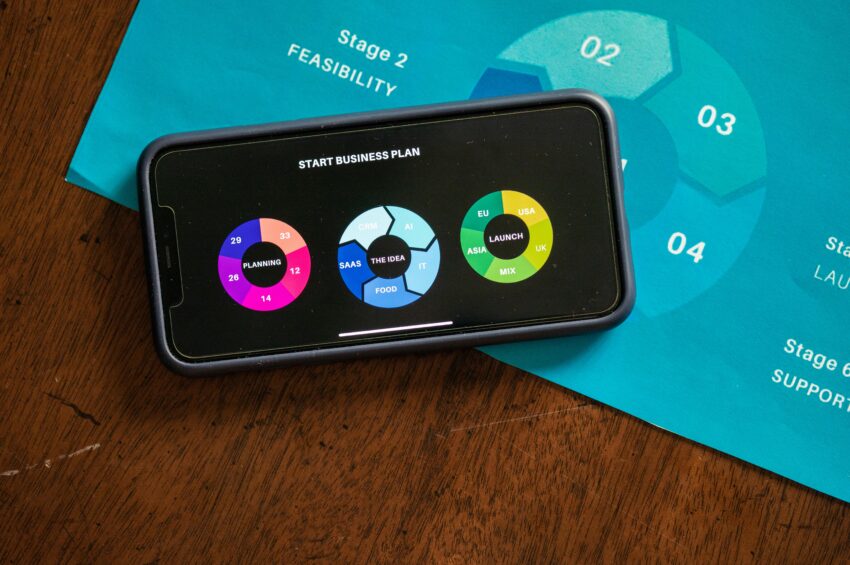
How to Create High-Converting Facebook Ads: A Step-by-Step Guide
Introduction: Mastering the Art of Facebook Ads
Facebook ads have become an indispensable tool for business growth in today’s digital landscape. With the right approach, Facebook ad campaigns can yield impressive conversion rates, driving leads, sales, and brand awareness. This guide provides a comprehensive Facebook advertising guide, equipping you with the knowledge and strategies to create high-converting ads. The potential for success is significant, making mastering Facebook marketing essential for any business aiming to thrive online.
Step-by-Step Instructions: Crafting Your High-Converting Ads
Step 1: Defining Your Objectives and Target Audience
Before diving into the technical aspects, define your advertising objectives. Are you aiming for brand awareness, website traffic, lead generation, or direct sales? Clear goals are crucial for measuring success. Simultaneously, understanding your ideal customer profile (ICP) is paramount. Research demographics, interests, behaviors, and pain points to tailor your ads effectively. This foundational step is crucial for creating targeted and relevant social media ads.

Step 2: Setting Up Your Facebook Business Manager and Ad Account
To run Facebook ad campaigns, you’ll need a Facebook Business Manager account. If you don’t have one, create it at Business Manager. This centralized hub allows you to manage your pages, ad accounts, and access various business tools. Within Business Manager, set up your ad account. Ensure you have the necessary permissions and that your payment information is correctly entered. This step is fundamental for paid advertising.

Step 3: Conducting Audience Research and Targeting
Facebook offers powerful targeting options. Use them to reach your ideal audience. Start with demographic targeting (age, gender, location). Then, delve into interests, behaviors, and custom audiences. Custom audiences are created from your existing customer data (website visitors, email lists). Lookalike audiences allow you to target users similar to your existing customers. Thorough audience research is a critical part of any effective marketing strategy. Consider also using AI to optimize your audience targeting, as discussed in the guide on Unlocking Meta Ads Success: Your AI-Powered Guide.

Step 4: Crafting Compelling Ad Copy and Creative Assets
Your ad copy and creative assets are what grab attention. Write engaging ad copy that speaks directly to your target audience’s needs and desires. Use clear, concise language and include a strong call to action (CTA). Create visually appealing images or videos. High-quality visuals can significantly improve performance. Test different ad copy variations to see what resonates most with your audience. Consider using AI to help generate ad copy, as explored in the guide on Boosting Your Digital Marketing: A Practical Guide to AI Implementation.

Step 5: Choosing the Right Ad Format
Facebook offers various ad formats. Select the format that best suits your objectives. Image ads are great for static content. Video ads are engaging and can tell a story. Carousel ads allow you to showcase multiple products or features. Lead generation ads simplify the lead capture process. Collection ads are ideal for showcasing products within the Facebook platform. The best format depends on your goals and the nature of your offering. For e-commerce, consider the insights in How to Create Facebook Ads for Ecommerce: A Step-by-Step Guide.

Step 6: Setting Your Budget and Bidding Strategy
Determine your advertising budget. Start with a budget you’re comfortable with and adjust based on performance. Select the bidding strategy that aligns with your goals. Options include cost per click (CPC), cost per mille (CPM), and others. CPC is suitable for driving traffic, while CPM is best for brand awareness. Review the bidding strategies to optimize your Facebook ad campaigns. You can also learn how to use AI for optimization in How to Supercharge Your Google Ads with AI.

Step 7: Setting Up Conversion Tracking
Install the Facebook Pixel on your website. This code tracks user actions, allowing you to measure ad effectiveness, build custom audiences, and optimize campaigns for conversions. Set up conversion events for actions like purchases, leads, and sign-ups. Accurate conversion tracking is essential for assessing your ROI. Learn more about this in Facebook Ads Made Simple: How to Create High-Converting ….

Step 8: Launching and Monitoring Your Ad Campaign
Once everything is set up, launch your campaign. Monitor its performance regularly using Facebook Ads Manager. Track key metrics like reach, impressions, click-through rate (CTR), conversion rate, and cost per acquisition (CPA). Pay close attention to which ads are performing well and which are not. This process will allow you to refine your Facebook ad campaigns for better results.

Step 9: Analyzing Results and Optimizing Your Ads
Analyze your campaign data to identify areas for improvement. If your CTR is low, revise your ad copy or creative. If your conversion rate is poor, review your landing page. A/B test different ad variations to identify the most effective elements. Make adjustments to your targeting, bidding, or budget as needed. Continuous optimization is key to maximizing your ROI. Consider also exploring 8 Steps to High-Converting Facebook Ads [Examples+Templates] to improve your conversions.

Tips and Warnings: Maximizing Your Ad Performance
Avoiding Common Mistakes in Facebook Advertising
Avoid common pitfalls, such as targeting too broad an audience, using low-quality creatives, not setting up conversion tracking, and neglecting A/B testing. Be careful not to violate Facebook’s advertising policies. Review the tips in How to Run Facebook Ads That Convert – Neil Patel for a successful campaign.

Staying Updated with Facebook Ads Best Practices
Facebook’s advertising policies and algorithms change. Stay informed by following the Facebook Business Help Center and subscribing to industry blogs. Continuous learning is crucial for staying ahead of the curve. Consider the advice from How to Create Facebook Ads That Convert Like CRAZY – YouTube to understand how to succeed.
A/B Testing: The Key to Continuous Improvement
A/B testing is essential for optimizing ad performance. Test different ad copy, creatives, targeting options, and bidding strategies. Analyzing the results will help you identify what works best for your audience. Experiment with various elements to fine-tune your approach.
Conclusion: Achieving Facebook Ads Success
Creating high-converting Facebook ads requires a strategic approach. By following these steps, defining your objectives, targeting the right audience, crafting compelling ads, choosing the right format, and continuously optimizing your campaigns, you can increase your chances of success. Remember to monitor your results, analyze your data, and adapt your strategy as needed. Through persistent effort and a data-driven mindset, you can unlock the full potential of Facebook advertising and achieve significant results.
FAQ
What is the Facebook Pixel, and why is it important?
The Facebook Pixel is a piece of code that you place on your website to track the actions people take, allowing you to measure the effectiveness of your ads, build custom audiences, and optimize your campaigns for conversions.
How do I choose the right bidding strategy for my Facebook ad campaign?
The best bidding strategy depends on your campaign objectives. Options include cost per click (CPC), cost per mille (CPM), and others. Consider your goals and budget when making your selection.
How often should I monitor and optimize my Facebook ad campaigns?
It’s recommended to monitor your campaigns daily or at least several times a week, especially in the beginning. Make optimizations based on performance data as needed.
What are some common mistakes to avoid in Facebook advertising?
Common mistakes include targeting too broad an audience, using poor-quality creatives, not setting up conversion tracking, and neglecting A/B testing.
How can I stay updated with Facebook ads best practices?
Follow the Facebook Business Help Center, subscribe to industry blogs, and keep up-to-date with changes to Facebook’s advertising policies and algorithm updates.
Additional Resources / References
- Facebook Ads Made Simple: How to Create High-Converting …
- 8 Steps to High-Converting Facebook Ads [Examples+Templates]
- How to Run Facebook Ads That Convert – Neil Patel
- How to Create Facebook Ads for Ecommerce: A Step-by-Step Guide
- How to Create Facebook Ads That Convert Like CRAZY – YouTube
- How to Supercharge Your Google Ads with AI
- Boosting Your Digital Marketing: A Practical Guide to AI Implementation
- Unlocking Meta Ads Success: Your AI-Powered Guide



